November 23, 2021Inuit and the Inuit Nunangat 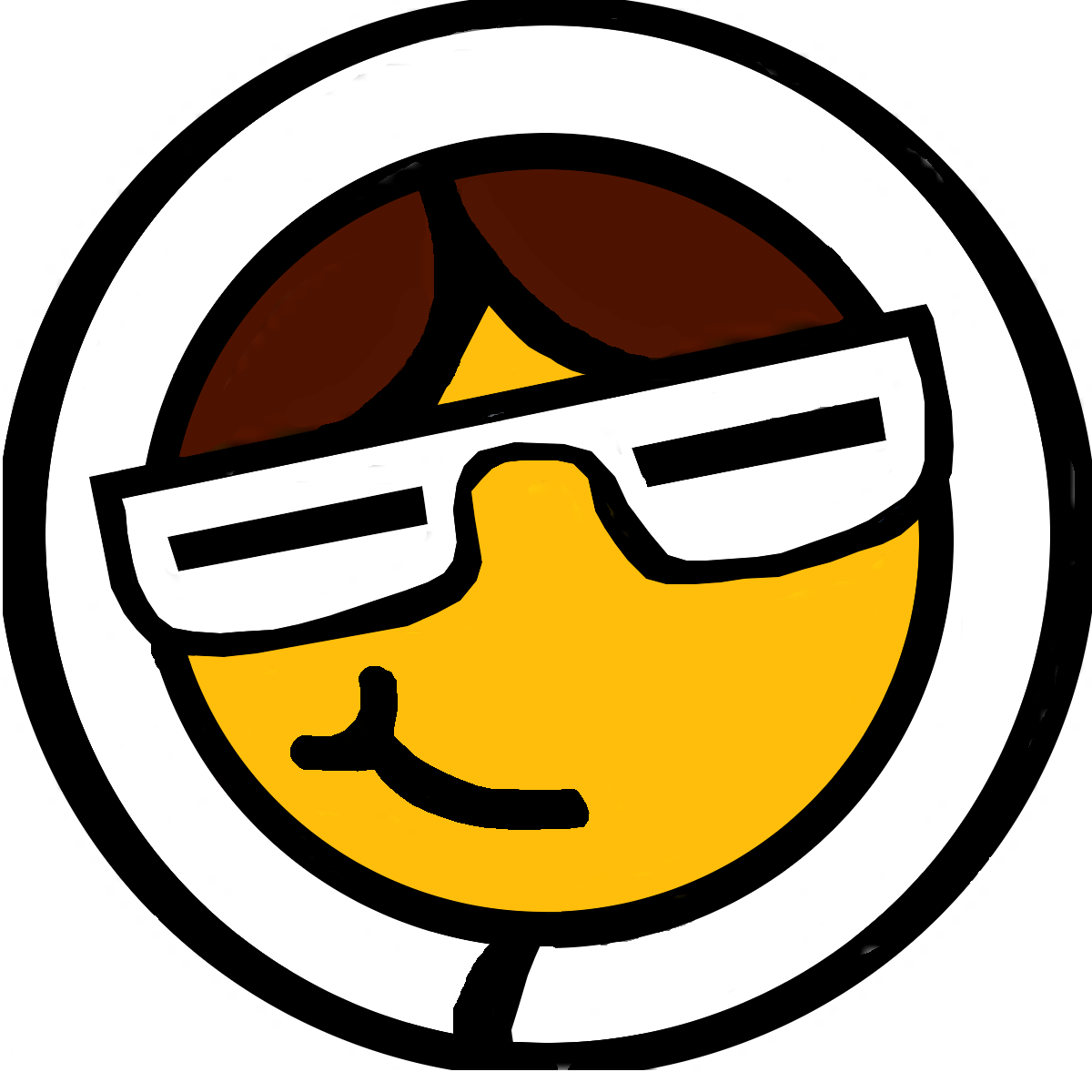 Inuit are the original people of the North American Arctic.
|
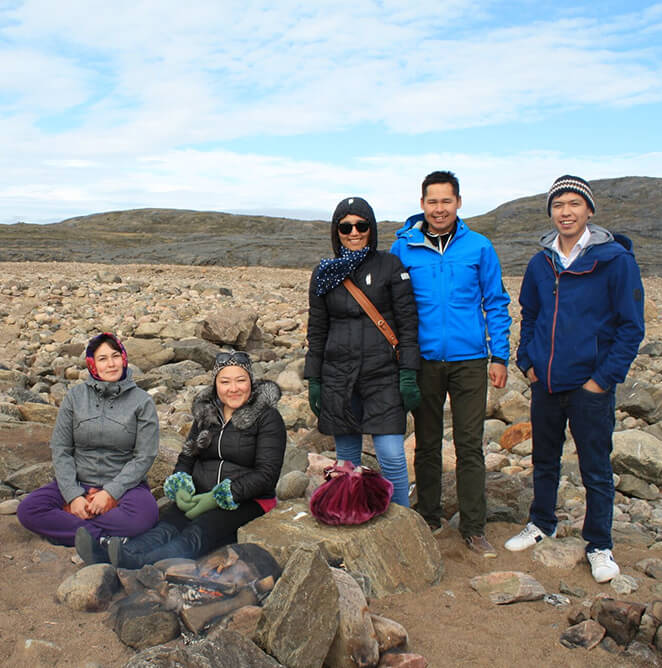
Photo from Inuit Tapiriit Kanatami, Canada's national voice for Inuit communities, which means “Inuit are united in Canada”. In 2001, the name was changed to reflect the settlement of land claims agreements in all Inuit regions.
|
Inuit have inhabited what is now known as the Canadian North since time immemorial. Inuit means “the people” in Inuktitut, and an individual Inuit person is known as an Inuk.
The Inuit homeland is called Inuit Nunangat, which refers to the land, water and ice contained in the Arctic region. Inuit consider the land, water and ice of their homeland to be integral to their culture and way of life.
There are four Inuit regions in Canada, collectively known as Inuit Nunangat:
- Inuvialuit Settlement Region (Northwest Territories)
- Nunavut
- Nunavik (Quebec)
- Nunatsiavut (Labrador)
There are 51 communities spread across Inuit Nunangat. It encompasses 35% of Canada’s landmass and half of its coastline. Canadian Inuit are the largest non-Crown landowners in Canada.
Source: About Canadian Inuit (Inuit Tapiriit Kanatami)
Demographic facts
- 65,025 Inuit live across Canada (29% growth since 2006)
- 3 in 4 Inuit in Canada live in Inuit Nunangat, with more than half living in Nunavut (64%), followed by Nunavik (25%)
- Since 2006, the Inuit population grew by 20% inside Inuit Nunangat and 62% outside
- 33% of the population are 14 or younger—seven times proportion of those 65 and older (4.7%)
- Nearly 2 in 3 Inuit report having conversational knowledge of an Inuit language or dialect, and in Inuit Nunangat, the number rises to over 4 in 5, showing how pervasive language is in the homeland
Source: 2016 Census (Statistics Canada)
Join our first ever online symposium on Indigenous economiesNovember 29-30 from 13:45 to 19:00 ET | North America
November 30-December 1 from 07:45 to 13:00 NZDT | South Pacific
|
Inuit history
Inuit communities rely on the natural resources around them to survive in the harsh Arctic environment. Inuit were traditional hunter gatherers, living primarily on the fish and sea mammals available to them.
Hunting and living in harmony with the land continues to be at the centre of Inuit way of life. Like many indigenous peoples, the Inuit use all parts of the animal efficiently for food, clothes, and tools, creating innovative spears and harpoons, parka coats, blankets, and boats.
|
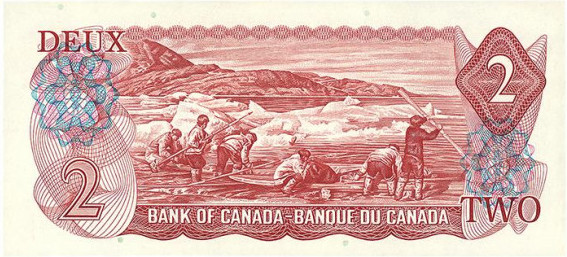
Read the story of Inuit hunter Joseph Idlout, who appears on the 1975 Scenes of Canada series $2 banknote (Bank of Canada Museum)
|
Colonization
Colonization had a significant impact on the Inuit, the impacts of which are still felt today. Programs including forced relocation, residential schools, disc numbers and Project Surname were imposed in an attempt to assimilate Inuit.
Disc numbers, which were similar to dog tags, were given to Inuit by the federal government as identification and were to be worn at all times. Disc numbers were later replaced by Project Surname, where Euro-Christian last names were imposed on Inuit for registration and identification purposes.
Cultural identity
Despite these traumas, Inuit are resilient, and their cultural identity remains strong. Traditions are maintained through language, traditional values of inclusiveness and collaboration, family structures, art, food, music, and games.
For more information on Inuit history, you can visit the Indigenous Peoples Atlas of Canada.
Self-government
|
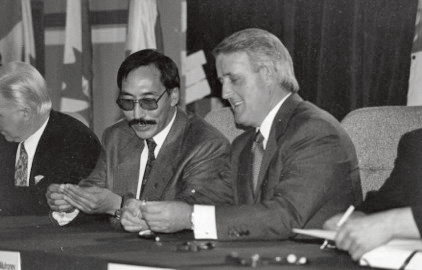
Paul Quassa, President of the Tungavik Federation of Nunavut, and Prime Minister Brian Mulroney signing the Nunavut Land Claims Agreement, Iqaluit, May 1993. (photo credit: Hans-Ludwig Blohm, C.M.)
|
The fight for land claims and self-determination is ongoing in many indigenous communities. For Inuit, land claim agreements have been signed in all four Inuit regions, paving the way for self-determination.
One example is the Nunavut Agreement, a modern treaty where the self-government aspirations of Inuit are expressed through public, consensus-based government. This self-government agreement is unique due to the fact that the Nunavut government represents all the people residing in its territory.
Source: Self-government agreements (Crown-Indigenous Relations and Northern Affairs Canada)
The Inuit economy
Comprehensive economic data on Inuit is limited, and more needs to be done to enhance data availability. A recent report by the National Indigenous Economic Development Board (NIEDB) highlights how Inuit communities continue to face barriers to full economic inclusion.
Employment
According to the 2019 NIEDB report, Inuit peoples experienced an increase labour force participation from 2006 to 2016. Despite this increase, the Inuit unemployment rate increased more than other heritage groups. This indicates that more Inuit were available and looking for work, but were unable to find employment.
Education
While education outcomes for Inuit are improving, their high school, college and university completion rates lag behind First Nations and Métis. This could be partially due to the additional barriers of attaining quality education in Northern and remote communities.
Income
Inuit median income increased from $16,969 in 2005 to $24,502 in 2015, or just over 70% of non-Indigenous median income.
Read more: First Nations People, Métis and Inuit in Canada: Diverse and Growing Populations (Statistics Canada)
Governor General Mary May Simon
|
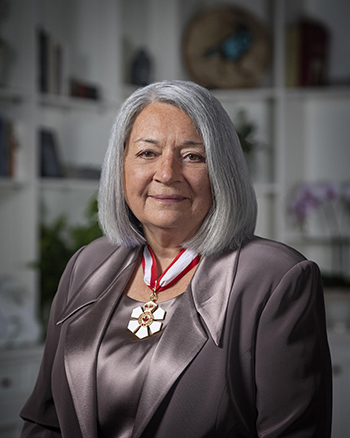
Her Excellency the Right Honourable Mary May Simon was sworn in on July 26, 2021, as Canada’s first Indigenous governor general. She is the 30th governor general since Confederation. (The Governor General of Canada)
|
Canada’s recently named Governor General, Mary May Simon, is the first Indigenous (Inuk) Governor General in Canada.
Her career has focused on advocating for Indigenous and Inuit rights and culture and her appointment has been heralded as a positive step forward in reconciliation.
Discover something new from Inuit art and culture
Explore Inuit art, music, and some of the cultural symbols that make Inuit culture distinct.
Have a favorite Indigenous artist or recipe? Let us know! Reply to this message and we will share it on the conference website for others to discover.
Art
See works from Kenojuak Ashevak, whose art appears on the Canada 150 commemorative banknote. Another well-known Inuk artist is Shuvinai Ashoona who recently spoke with the Art Gallery of Ontario.
|
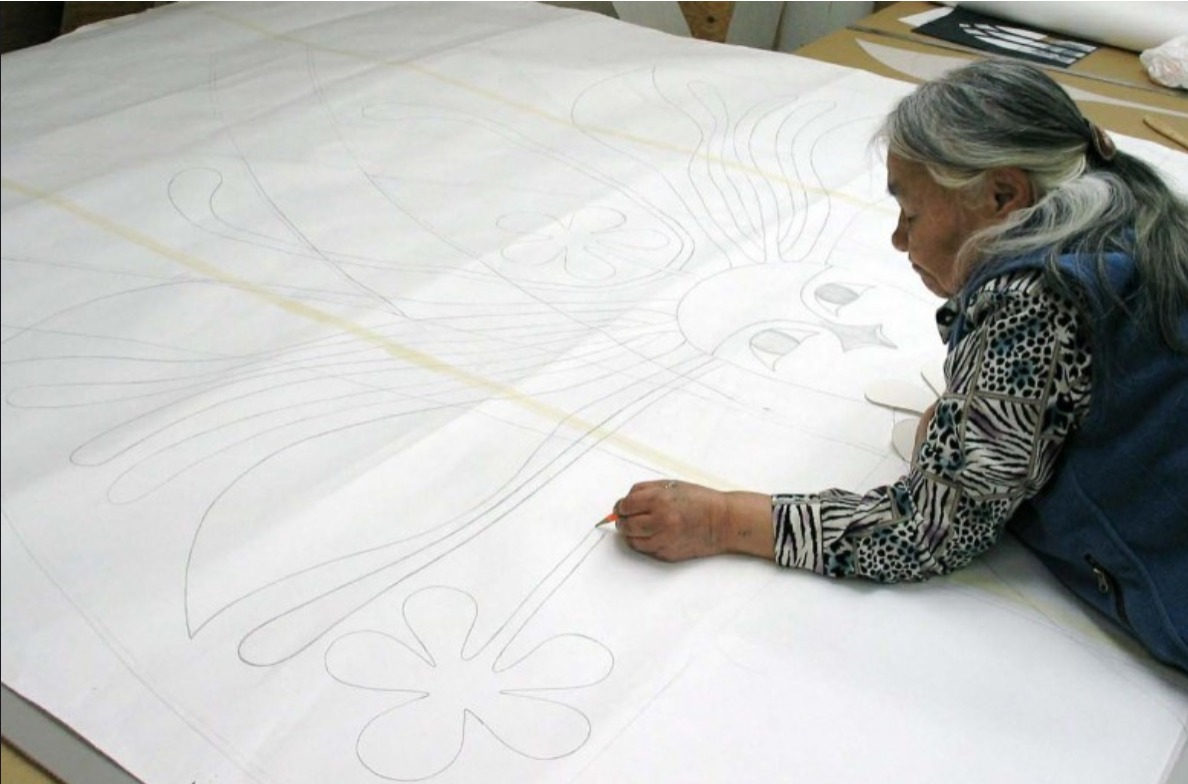
Owl’s Bouquet is a stone-cut and stencil print by acclaimed Inuit artist Kenojuak Ashevak (Bank of Canada)
|
|
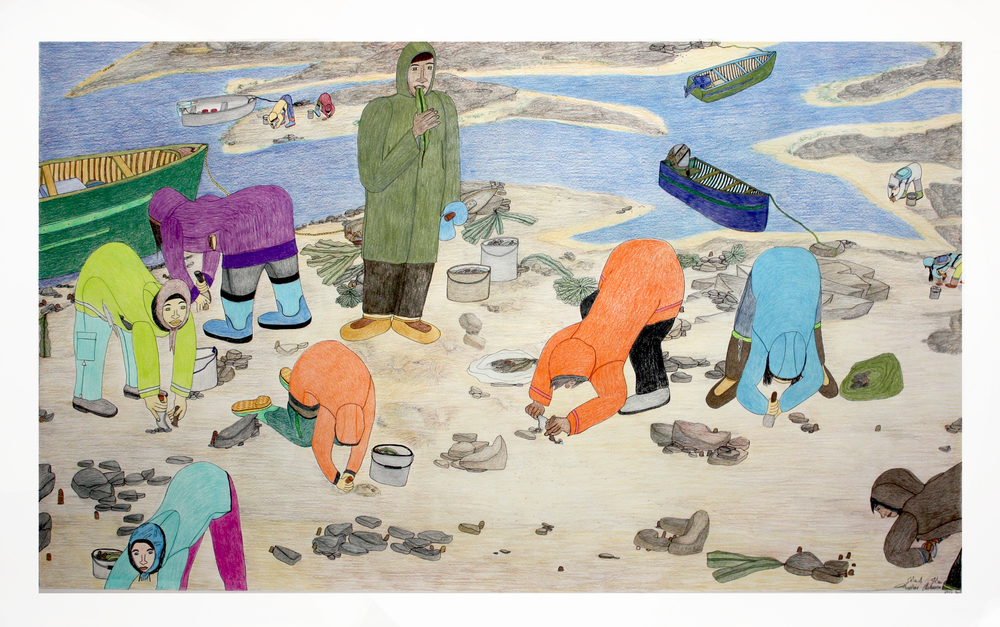
Untitled by Inuit artist Shuvinai Ashoona (Dorset Fine Arts)
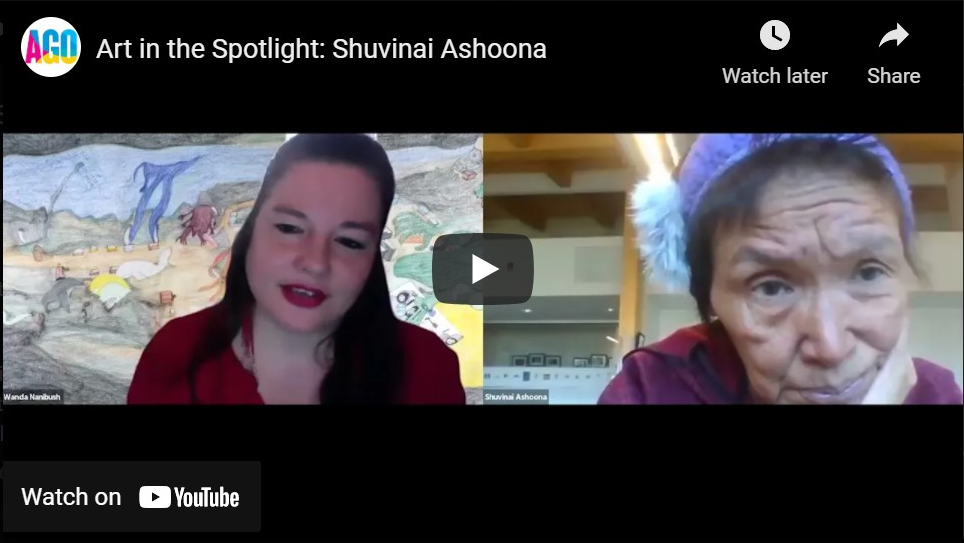
|
Clothing
Clothing is an essential component to survival in the harsh Arctic. Inuit past and present construct and wear clothing made of the animals they hunt including caribou and sealskin. Learn more about Inuit parkas and the precise skills needed to create traditional clothing.
|
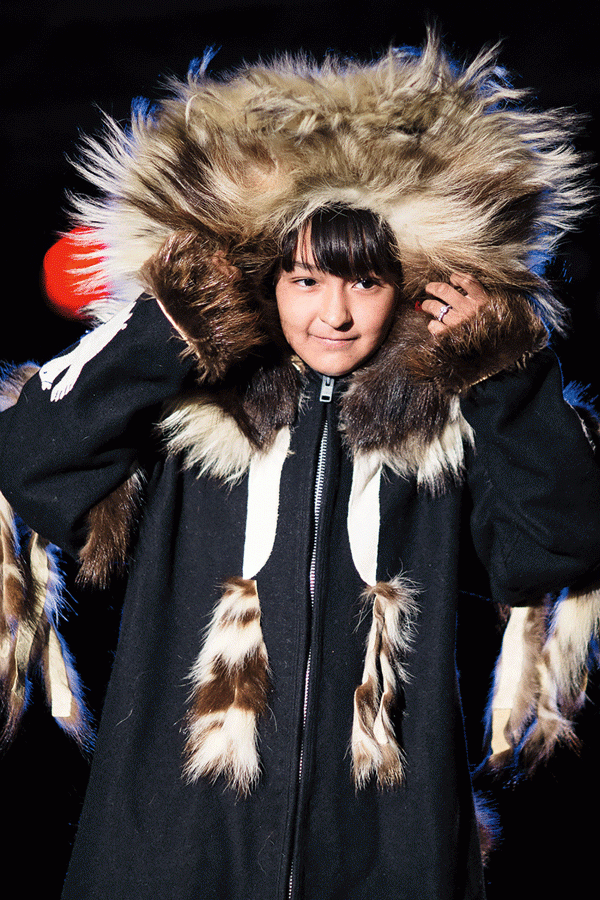
Anastazia Cockney in the Inuvialuit Settlement Region wearing a fur-trimmed parka (Indigenous People's Atlas of Canada)
|
Throat singing and drum-dancing
Traditional Inuit music is based around drums used in dance, music and storytelling, plus a vocal style known as katajjaq in Inuktut and throat singing in English.
Throat singing is usually performed by two women producing a range of sounds from the throat and chest. Throat singing was at risk of extinction after years of shaming by colonizers, but a new generation of Inuit are reviving and popularizing the tradition.
The main Inuit percussion instrument is the wooden frame drum called the qilaut. Drum dancing plays a part in many special occasions such as births, marriages, a first hunt, changing of seasons, greetings for visitors or to honor someone who had passed away.
Arctic Winter Games
Many Inuit compete in traditional games and sports such as high-kick (one- and two-foot varieties) and kneel-jump. Such games are featured in the Arctic Winter Games, held every two years.
Inukshuk
Perhaps one of the most recognizable indigenous symbols is the inukshuk. Traditionally constructed by Inuit, inuksuit (more than one inukshuk) are used for navigation and communication in the North. Inukshuks are also used to mark sacred places. They can also work like signposts.
What many people call an inukshuk isn’t what the Inuit call an inukshuk. Human-shaped stone structures are called inunnguat or inunnguaq, meaning “imitation of a person” or “pretend person”.
Inuktitut language
Inuktitut is the traditional language of Arctic peoples. There are several regional dialects, each with their own names. Many Inuit report having at least conversational knowledge of a traditional language.
New apps and tools are being developed to help keep Inuit language alive, like Inuttut Kautamât uKauset (Inuttitut Everyday Words). Learn more about the app in ITK's Inuktitut magazine article, Learning Inuttitut on your Fingertips (page 7).
Acknowledgements
We acknowledge that the Bank of Canada offices are located on the land of the First Nations, Inuit, and Métis. We pay our respect to Indigenous Peoples across the country and to their ancestors for their immeasurable contributions to this country.
This newsletter’s text was reviewed by Malaya Mikijuk. We thank her for her time and effort to help us share the story of Inuit in Canada.
This is the fourth newsletter is a series published for the 2021 Symposium on Indigenous Economies. You can read past newsletters on the conference website. |